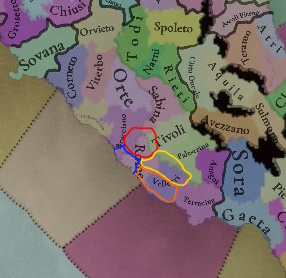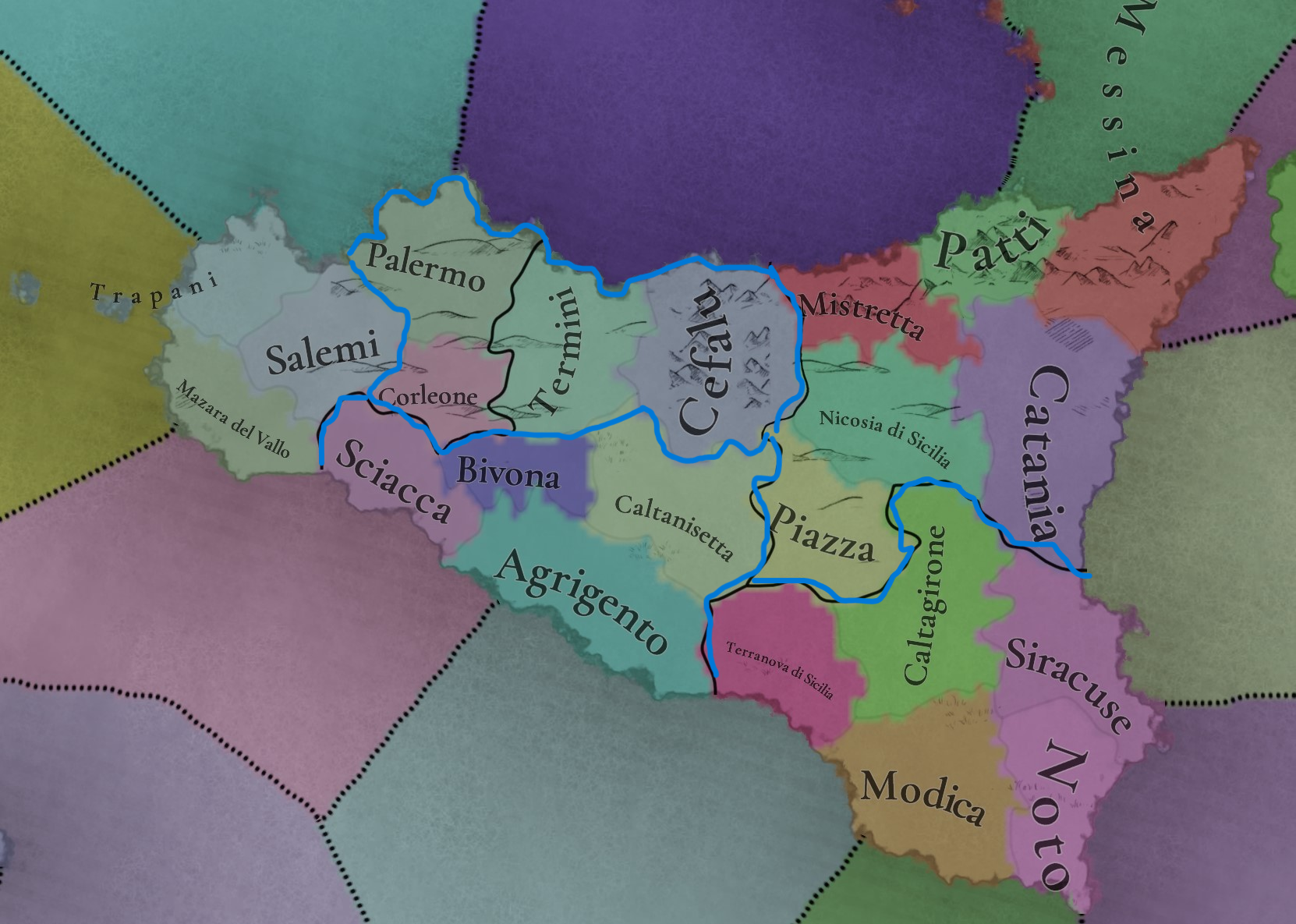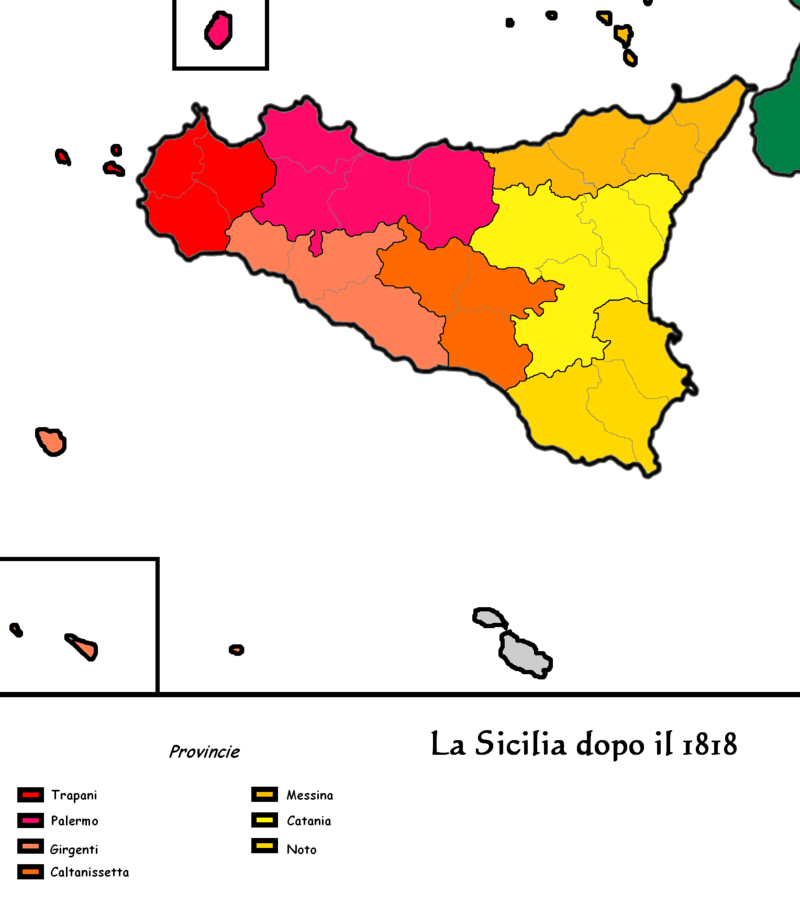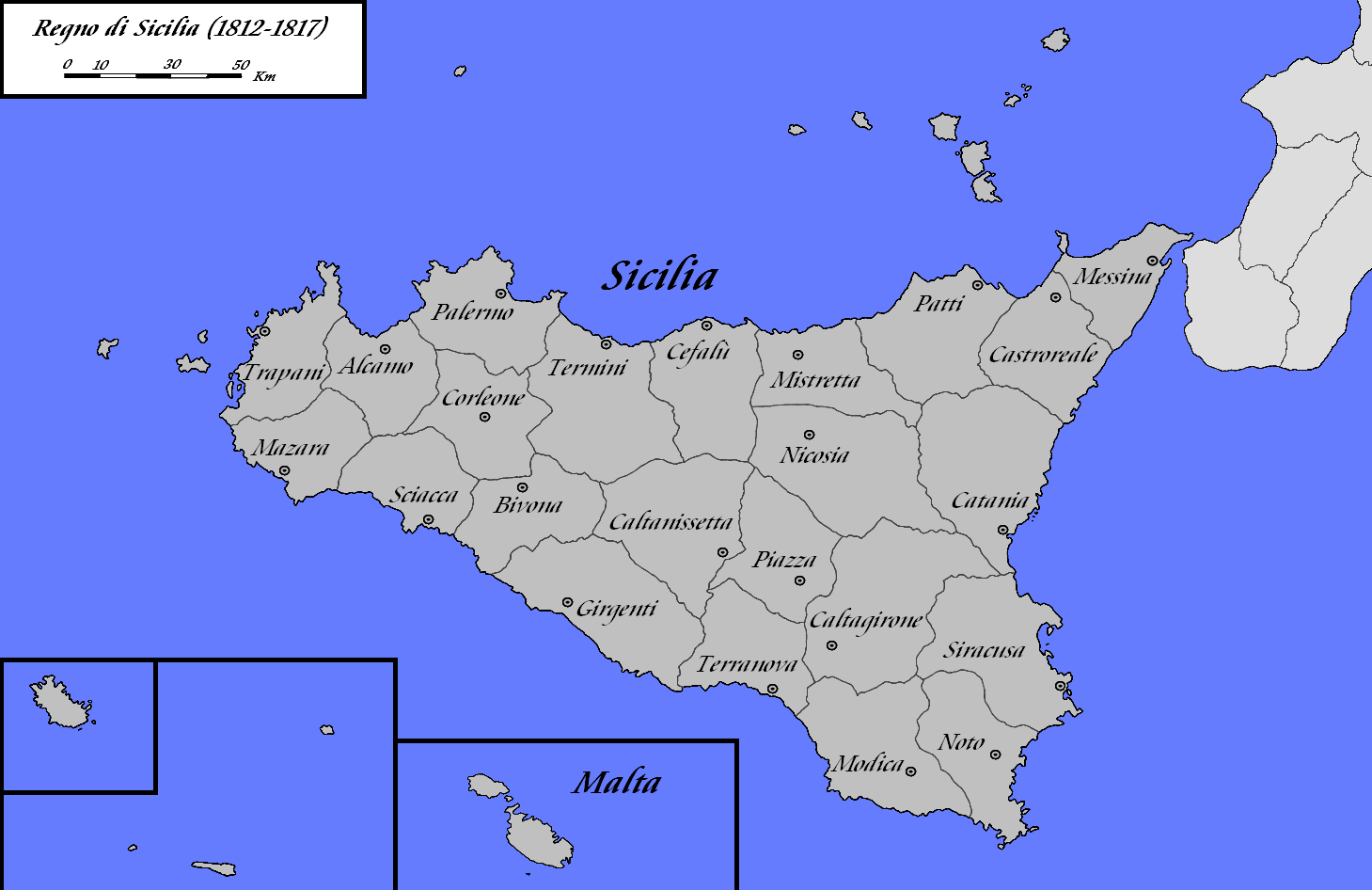Sardinia in Project Caesar
@Johan @Pavía
I will mostly give my suggestions according to what I’ve seen in this Tinto Maps thread, but I will also give some other information that, at least in my opinion, could be useful for better representing the island of Sardinia in Project Caesar. I’ve spent quite some time doing some research, mostly through what I found on internet, but I’ve also relied a lot on the pre-existing knowledge I had, since I'm quite passionate about the topic and I’m from Sardinia. However, I tried to include as many sources as I could in the bottom of the text.
Locations names are based on the map I made, I will use names in Sardinian
The judicates
First, we can’t talk about medieval Sardinia without talking about the judicates, autochthonous states that existed in the island from the IX to the XV century.
Sardinia originally had four judicates, they all ended slightly before the start date (at the end of the XIII century) except for Arborea. For this reason, they should all be present as releasable nations, with the borders present in the image below.
They were called:
- Judicate of Calari (EN) or Judicadu de Càlaris (SA), with its capital in Càlari (Cagliari)
- Judicate of Torres (EN) or Judicadu de Torres (SA), with its capital in Thathari (Sassari)
- Judicate of Arborea (EN) or Judicadu de Arbarea (SA), with its capital in Aristanis (Oristano)
- Judicate of Gallura (EN) or Judicadu de Gaddura (SA), with its capital in Terranoa (Olbia)
(As usual in middle-ages, there were no fixed capitals, although, progressively, some centres became the privileged seats of power)
View attachment 1145201
The judicate was a unique form of state, directly derived from the previous Byzantine administration and so they weren’t feudal states. It had the same rank of a kingdom and so it didn’t recognise any power above them (they claimed the
summa potestas).
Each judicate was ruled by a
judike (or
judikessa if female), that was the king (or to be more precise a “supreme magistrate”). He was elected by the
Corona de Logu, a parliament composed by representatives of each
Curadoria (administrative districts), clergymen, castellans and two representatives from the capital elected by the judike. The election criteria were based on a mixed elective-hereditary system following the direct male line and, only alternatively, the female line. The parliament also had the task of supervising the sovereign's actions.
The judike did not have possession over the land nor he was the repository of sovereignty since this was formally held by the Corona de Logu. He ruled on the basis of a pact with the people (the
bannus-consensus) and if he violated it, he could have been ousted or, in cases of serious acts of tyranny and abuse, even legitimately executed, without this affecting the hereditary transmission of the title within the ruling dynasty (yes, this actually happened). He could not declare war, sign peace treaties or dispose of the Judicate assets without the permission of the Corona de Logu.
Each judicate also had a written legal code (comparable to a constitution): the
Carta de Logu, a collection of penal, public, civil and land regulations. The Carta de Logu of the Judicate of Arborea, promulgated by the judikessa Eleanor of Arborea in 1392, is the most famous and important one as it was in force in all of Sardinia until it was superseded by the code of King Charles Felix in April 1827.
So, in short, the judicate can be considered as a proto-constitutional monarchy.
As I previously said, the only living judicate in 1337 was Arborea, the Kingdom of Sardinia was a feudal state and, while it had a relative autonomy from the Crown, it was organized similarly to other kingdoms in continental Europe (while some customs were kept, like the Carta de Logu or some of the previous administrative organization).
Proposals
- Add the four judicates as releasables
- Add Sardinian localized names (Judike for king, Corona de Logu for parliament, etc.)
- Represent the Judicate of Arborea (and other releasable judicates) as a sort of constitutional monarchy, with a parliament and a “constitution” (I’m sure there will be laws that unlock parliaments and constitutions), and with its elective-hereditary succession system
Politics
This was the political setup of Sardinia in 1337:
View attachment 1145202
We had four different nations still present, the Kingdom of Sardinia extended over the previous Pisan territory (old judicates of Calari and Gallura) plus the city of Thathari, the Judicate of Arborea instead had owned big chunks of land in the centre-west of the island and the Doria, a powerful Genoese family, ruled over some land where once there was the Judicate of Torres. The Malaspina still had little holdings in the north-west, but they were on the brink of their end.
- Kingdom of Sardinia (and Corsica): its capital was in Calari (where the parliament was instituted in 1355). It was a feudal state, ruled in 1337 by the Catalan governor Ramon de Ribelles until 1418, when a viceroy was appointed. The Kingdom of Sardinia and Corsica (Regnum Sardiniae et Corsicae) was created in 1297 by pope Boniface VIII and its crown was conceded de jure to the king James II of Aragon; it was established de facto after the war won against Pisa and Genoa, in 1326. In 1479 it was renamed to just “Kingdom of Sardinia”, as Corsica was never taken from Genoa, despite many attempts.
- Judicate of Arborea: its capital was in Aristanis. It had the previously discussed form of government and at the time was ruled by Pedru III de Bas-Serra (the latter is the dynasty name).
- The Doria (Genoa): their “capital” was in Castelgenovese. They were an important family from Genoa that took control of some of the land where once there was the judicate of Torres. They ruled this land as a personal possession but for game purpose maybe it should be considered Genoa territory.
- The Malaspina (Aragon): they were a powerful Italian family that gained control of some territory during the dissolution of the judicate of Torres. In 1337 they were left with few territories in the Lugudoro region (Torres), centred around the castle of Osilo. In 1343 they were annexed into the K. of Sardinia.
Representing the K. of Sardinia as a PU under the Crown of Aragon is not only historically accurate, but it would also represent better the events that has seen the kingdom basically transferred first to the Austrians and then to the Piedmontese in the XVIII century. The kingdom existed continuously until 1847 when, with the “Fusione Perfetta” (meaning “perfect fusion” in Italian) it was integrated into the continental states of Savoy and Piedmont, similarly to what the English Crown did in Ireland with the Act of Union in 1800.
Proposals
- Make the Kingdom of Sardinia a PU under Aragon. It should be of Sardinian culture, but its “institutions” should be similar to the Crown of Aragon
- Here you can either make the Doria be their own “nation” (as they technically were) or, for the sake of simplicity, portray their territories as directly owned by Genoa
- The same goes for the Malaspina, they technically were vassals under the K. of Sardinia, but you can also portray them as a directly owned territory by the K. of Sardinia
View attachment 1145203
(locations names might be wrong)
Diplomacy
The
Kingdom of Sardinia was a in a PU under the
Crown of Aragon. It had a claim over all of Sardinia and Corsica.
Aragon and Arborea were allies but the latter were already suspicious, as they felt threatened by the Aragonese expansion. This alliance was very unequal, in the eyes of the Aragonese it was a vassalage although Arborea was still
de facto independent. For these reasons, Arborea will wage war against the K. of Sardinia in 1353, after less than 15 years since the start date.
The
Doria were very hostile to the Kingdom of Sardinia, they fought in 1329 and they will fight again (winning this time) in 1347. In 1353 they allied with Arborea.
The
Malaspina were vassals of the Aragonese king until 1343, when their territories were inherited by the latter and incorporated into the Kingdom of Sardinia.
Also, Sardinia was one of the areas that suffered the most from incursions of Barbary pirates and this problem lasted during the whole game timeframe, for this reason most coastal towns were abandoned in favour of more inland and defensible positions (this also led to a lot of areas becoming marshy and, for this reason, there was a consequent greater spread of malaria).
Proposals
- Alliance between Arborea and K. of Sardinia/Crown of Aragon (depending on how PU will work), although their relations should start to deteriorate in the following years
- The Doria (Genoa) should be very antagonistic against the Aragonese and they should start to close ties with Arborea in the following years
- The K. of Sardinia should have a claim over the entirety of Sardinia and Corsica
- The Doria (Genoa) should have a claim over Thathari
Demography
According to most sources I found, the island had between 300.000 inhabitants (to be fair, estimates go from 200.000 to 500.000).
The most important and populous cities were Thathari, Aristanis, Calari, Igresias, Castelgenovese and Bosa. Thathari was the most populous city, it counted at least 10.000 inhabitants. Also, Terranoa was considered as
quasi civitas, almost a city (less important than the ones I’ve presented).
The population ratio between cities and countryside was between 1 to 3 and 1 to 5. However, during the XIV century, the new economic setup brought by the Aragonese, the many wars that were fought and the Black Death (which killed 1/3 to 1/2 of the total population) provoked a progressive abandonment of many villages (10/12% of them) and a consequent centralization of the population. During the end of the XIV century and the start of the XV 55/60% of rural villages were abandoned.
2/3 of the population were serfs.
Population growth was kept low by the malaria.
It had always been a problem since pre-Roman times, but in the late Middle Ages the problem became even worse. During the previous centuries the Barbary pirate’s incursions caused the abandonment of the coasts and this made them become marshy. This, together with the naturally humid climate and the already very sparse population, led to an even worse proliferation of malaria, in the coasts and in the plains.
Proposals
Just consider the info I provided, unfortunately I couldn’t find more detailed and specifical data for population numbers, I will update it in the case
Culture
Sardinian was the main language in the island. It was the language of the elites even in places where other languages were spoken (like in Sassari).
The majority of the population was
Sardinian.
There were communities of
Tuscans especially in Igresias, but also in Calari, Orisei and Terranoa, and in general there were small communities in all the territory controlled by the K. of Sardinia, as it was almost all Pisan territory until some decades prior to 1337. Also, Bosa had a small community of Tuscans.
There were communities of
Ligurians in Alighera, Castelgenovese. A small community also in Aristanis
There were communities of
Catalans in Calari and Thathari. In Igresias they were the 5%.
In the end of the XIV century Calari and Alighera have seen a huge influx of Catalan immigrants (especially the latter, where they became the majority).
There were big communities of
Corsicans in the north of Gallura, especially in Lungoni, Tempiu and Terranoa.
Also, Castelgenovese had a smaller community of Corsicans. Thathari and Nurra had probably some small communities too.
Their migration to Sardinia started, at least from what it is documented, in the XIV century and so they should’t be too many. The north of Gallura had the most but they weren’t the majority (at least in 1337).
There were consistent communities of
Jews in the major cities until 1492, when the Spanish expelled them. In Calari there were 70 Jew families.
Proposals
- Corsican people are too many, they weren’t a majority in any part of Sardinia. Their biggest presence was in Lungoni and Tempiu, followed by Terranoa. Also, Castelgenovese, Pasada, Thathari and Nurra should have a Corsican minority (but nothing more). I think this misconception come from the fact that nowadays in these areas the language is very similar to the Corsican language. But, in the XIV Corsicans weren’t that many, Gallura and northern Lugudoro weren’t influenced by Corsican immigrants as they were some decades later. At the time the majority still spoke Sardinian (in the lugudorese variant)
- Calari should have a majority of Sardinian, but with big minorities of Catalans and Tuscans
- Igresias should have a huge minority of Tuscans (they founded the city and populated it); Catalans should be only the 5% of the population in the city (so not the whole location, although the city was fairly populous)
- Aristanis should have a very small community of Ligurians (mostly merchants)
- Bosa should have a small community of Tuscans
- Castelgenovese and Alighera should have communities of Ligurians
- Thatari should have a community of Catalans (probably the 10% of the city’s population)
- Terranoa and Orisei should have Tuscan communities
- Some very little numbers of Tuscan pops can be added in other Locations iside the provinces of Calari and Gallura
- Calari, Thathari and Aristanis should have Jewish communities (in Calari they were 70 families)
Religion
The religion in the XIV century was Catholic in all the island. Probably some Pagans were still present in the Barbagia region but there aren’t a lot of sources for this and I don’t think that is enough to have a Pagan minority.
Proposals
No change
Military
Each judicate had a small standing army, composed of an elite force of cavalry (called the
Bujakesos). The main armaments were the sword, chain mail, the shield, the helmet, and the
birrudu, a weapon similar to the ancient
verutum, the Roman javelin.
Proposals
Add a small standing army for the J. of Arborea, composed of an elite force of cavalry (called Bujakesos)
Production
Economy relied largely on farming: wool, livestock, fur, wild game, and wine were produced.
The interior was rich of woods, it was a great source of lumber.
The curadories of Gippi and Trexenta and the land in Arborea had a rich wheat production. In general, the whole Campidano region had a rich production of cereals.
Calari was known for its salt production. Also Nurra had salt production.
Aristanis and Bosa had wine production.
Bosa had soap production.
Alighera was known for coral harvesting (but not processing).
Igrèsias had one of the most important silver production in Europe: it is estimated that between 5 to 10% of all the silver in Europe at the time came from here. However, it started its decline during the second half of the XIV century as its mines started depleting. Silver was present also in Sarrabus (Chirra) and Nurra.
Sulcis region had coal but it has been extracted only in recent times.
Proposals
- Alighera: Wheat
- Aristanis: Wine
- Belchidda: Lumber
- Bitzi: Lumber
- Bosa: Wine
- Calari: Salt
- Chirra: Silver
- Igresias: Silver
- Nurra: Salt/Silver
- Ollolai: Fur
- Orisei: Marble
- Pauli Gerrei: Lumber
- Seddori: Wheat
- Senobri: Wheat
- Seulu: Lumber
- Terraba: Wheat
- Tortoli: Lumber
- Other locations should be either Wool or Livestock (with at least one Wild Game or Fur in the interior locations)
Trade
The port of Calari always was “the gate of Sardinia”, most important port in the island, spices, woolen cloth and luxury goods were imported.
A huge quantity of wheat, produced in the Campidano plain, was exported in Italy (this trade route existed since Roman times) especially in Tuscany. Also, salt was one of the most exported products.
As I already mentioned silver was the most profitable good exported (ancient Greeks used to call Sardinia as
Argyróphleps nésos, the island of silver veins), at least until the beginning of the XV century.
Other exported goods were cheese, pasta, salted meat, fur, leather, wild game, wool, wine, livestock, lumber.
So, in summary: the most important goods were silver, wheat and salt; secondly, we have sheep farming products (wool, fur, livestock) and lamber.
Proposals
- Sardinia being in the Genoa market is 100% accurate, I don’t know why some interior locations are in the Naples market but I guess it is a bug
- Sardinia should export a lot of silver (5% of the silver in Europe only from Igresias mines), salt and wheat; other goods previously mentioned were exported but weren’t as important
Locations and Provinces
The principal administrative division in Sardinia was the Curadoria: I think this should be the basis for PC locations. This administrative system was definitively abandoned in the XV century, after the last judicate of Arborea was conquered, and it was replaced by the imposition of feudal institutions. However, the Curadorias are still the basis on which the “historical regions” of the island are shaped.
View attachment 1145205
I merged many curadorias with the purpose of having the right number of locations, with an area of more or less 500km2 (as most of other locations), while also taking into account historical borders (in 1337 but also previous borders)
Regarding provinces, we can have four (Calari, Arborea, Lugudoro, Gallura), reflecting the four judicates, or five, if we want to have also Barbagia, a region with its own peculiarities and history that differed a lot from the rest of the island. I find the first cleaner and better to avoid bordergore but the second reflects better the history of the island. I will not dive too deep into it, I will just say that Barbagia is a region that, since Roman times (or even Carthaginian) was considered its own thing, separated from the rest of the island (Barbagia derives from the latin word “Barbaria”, land of the barbarians, opposed to “Romania”, Roman territory or, in this case, the rest of the island)
For informational purposes only, a
map of Romania and Barbaria division (it lasted until VII century)
Proposals
Personally I prefer the division in the first picture as it is cleaner:
View attachment 1145206View attachment 1145208
Topography
View attachment 1145213View attachment 1145214
Proposals
Sardinia is much more mountainous than this, here is what I think topography should look like:
View attachment 1145215
*Carali can be also Flatland
Vegetation
Proposals
In the XIV century Sardinia vegetation was much denser than todays (huge deforestation happened much later with the Piedmontese), here is what Sardinia should have looked like according to the sources I found (and some personal knowledge of the territory):
View attachment 1145217
Localization
Here you have some localization in Sardinia to give some flavour to the region (also, some of the current locations names didn’t even exist back then, like Carbonia and Olbia). I have put the names of the most important cities or the curadorias capitals.
If you find this useful I can expand this by a lot.
Judike:
| singular | plural |
male | judike | judikes |
female | judikissa | judikissas |
Location names:
Sardinian | Italian | Catalan |
| Alighera | Alghero | Alguer |
| Ardara | Ardara | |
| Aristanis | Oristano | Oristany |
| Belchidda | Berchidda | |
| Bitzi | Bitti | |
| Bosa | Bosa | Bosa |
| Càlari | Callari / Castel di Castro | Càller / Castell de Càller |
| Casteddugenovesu | Castelgenovese | Castellaragonès |
| Chirra | Quirra | Quirra |
| Fordongianus | Fordongianus | Fordongianus |
| Igrèsias / Bidda de Cresia | Villa di Chiesa / Chiesa | Esgleyes / Vila d'Esgleyes |
| Laconi | Laconi | Laconi |
| Lungoni | Longosardo | Longosard |
| Nuor/Nugor | Nuoro | Nuoro |
| Ollollai | Ollolai | Ollolai |
| Orisei | Orosei | Orusei |
| Osile | Osilo | Osilo |
| Pasada | Pasada | Pasada |
| Pauli Gerrei | | |
| Senobrì | Senorbì | Senorbì |
| Seulu | Seulo | Seulo |
| Tempiu | Tempio | Temple |
| Terraba | Terralba | Terralba |
| Terranoa | Terranova | Terranoa |
| Thathari | Sassari | Sàsser |
| Tortolì | Tortolì | Tortolì |
| Tratalias | Tratalias | Tratalias |
Male names:
Sardinian | Italian | Catalan | English |
| Andria | Andrea | Andreu | Andrew |
| Antiogu | Antioco | Antioc | Antiochus |
| Antoni | Antonio | Antoni | Anthony |
| Baingiu | Gavino | Gaví | Gavin |
| Barore | Salvatore | Salvador | Salvator |
| Barusone | Barisone | Berenguer | Barisan |
| Basile | Basilio | Basili | Basil |
| Caralu | Carlo | Carles | Charles |
| Comita | Comita | Comte | Comita |
| Costantine | Costantino | Constantí | Constantine |
| Enzu | Enzo | Enç | Henry |
| Ferdinandu | Ferdinando | Ferran | Ferdinand |
| Fideli | Federico | Frederic | Frederick |
| Franziscu | Francesco | Francesc | Francis |
| Giagu | Giacomo | Jaume | James |
| Gunnare | Gonario | Gonari | Gonarius |
| Gugliermu | Guglielmo | Guillem | William |
| Istevene | Stefano | Esteve | Stephen |
| Ithoccor | Itocorro | Iocor | Itocorre |
| Juanne | Giovanni | Joan | John |
| Lenardu | Leonardo | Llenard | Leonard |
| Mariane | Mariano | Marian | Marianus |
| Orzocor | Orzocco | Orçoc | Orzoccor |
| Pedru | Pietro | Pere | Peter |
| Ramundu | Raimondo | Ramon | Raymond |
| Salusi | Salusio | Saluci | Salusius |
| Sergiu | Sergio | Sergi | Sergius |
| Thomas | Tommaso | Tomàs | Thomas |
| Torbenu | Torbeno | Torben | Torben |
| Trogodòri | Torchitorio | Torcitori | Torchitorius |
| Truiscu | Enrico | Enric | Henry |
| Ugone | Ugone | Hug | Hugh |
| Zusepe | Giuseppe | Josep | Joseph |
Female names:
Sardinian | Italian | Catalan | English |
| Adelasia | Adelasia | Adelasia | Adelisia |
| Agalbursa | Agalbursa | Agalbursa | Agalbursa |
| Agnesa | Agnese | Agnès | Agnes |
| Annica | Anna | Anna | Anne |
| Beneita | Benedetta | Beneta | Benedicte |
| Biata | Beatrice | Beatriu | Beatrice |
| Cadalina | Caterina | Caterina | Katherine |
| Costantza | Costanza | Constança | Constance |
| Elene | Elena | Elena | Helen |
| Elianora | Eleonora | Elionor | Eleanor |
| Franzisca | Francesca | Francesca | Frances |
| Lughia | Lucia | Llúcia | Lucy |
| Maria | Maria | Maria | Mary |
| Zuannicca | Giovannicca | Joanica | Johanna |
*Names in Catalan language might be wrong*
References
2023, Il tempo dei giudicati. La Sardegna medievale dal X al XV secolo d.C., Ilisso
https://www.wikipedia.org/
https://rime.cnr.it/index.php/rime/article/view/78/134
https://medievaleggiando.it/laffasc...le-l-isola-nel-medioevo-centrale-xi-xiii-sec/
https://www.alguer.it/info/algheroneltempo/ilnomedialghero.html
https://www.sardegnadigitallibrary.it/documenti/17_161_20080610112616.pdf
https://www.amezena.net/storia-di/breve-storia-dei-rapporti-fra-genova-e-la-sardegna/
https://books.google.it/books?hl=it&lr=&id=fw4XuEbKnQwC&oi=fnd&pg=PP11&dq=natural+resources+sardinia+middle+ages&ots=rYbVRgq6f2&sig=htEutUJxoY8KBO5lMzN-ia7rFHs&redir_esc=y#v=onepage&q=natural resources sardinia middle ages&f=false
https://books.google.it/books?hl=it&lr=&id=LjQBAAAAQAAJ&oi=fnd&pg=PA3&dq=natural+resources+sardinia+middle+ages&ots=9UOcun-Jrv&sig=ER-n8eelPsLxJXffgcTPceCP-s0&redir_esc=y#v=onepage&q=natural resources sardinia middle ages&f=false
https://core.ac.uk/download/pdf/11686433.pdf
http://www.rmoa.unina.it/2677/1/campus.pdf
https://www.sardegnadigitallibrary.it/detail/6499b87ce487374c8f8015b9
https://www.sardegnaforeste.it/noti...chive-un-altro-po-di-storia-dei-nostri-boschi
https://iris.uniss.it/retrieve/e1dc...5fe0ac7a3/Grassi_E_economia_a_sassari_dal.pdf
https://www.academia.edu/984526/_Sardegna_e_spazi_economici_nel_Medioevo_una_rilettura_problematica
https://www.academia.edu/102955618/Villaggi_centri_minori_e_città_nella_Sardegna_bassomedievale_Demografia_economia_società_XI_XV_secolo_
https://iris.unica.it/retrieve/7a6dcf79-ec48-4148-baa0-d98c4288a6be/Mameli_ArcheoArte_4.pdf
https://www.scuolafilosofica.com/682/la-malaria-nella-sardegna-medioevale
https://www.academia.edu/102955618/Villaggi_centri_minori_e_città_nella_Sardegna_bassomedievale_Demografia_economia_società_XI_XV_secolo_






































